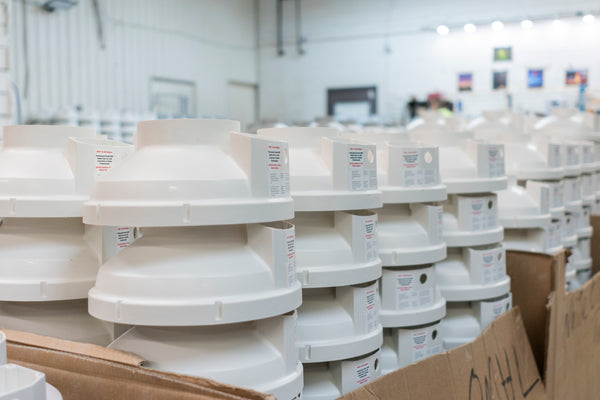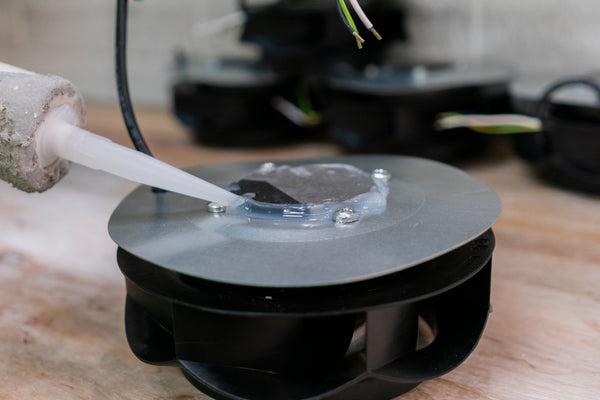
The Role of Ventilation in Home Safety and Comfort
Fresh air constantly flows through your home, yet most homeowners rarely consider the complex systems that make this possible. Proper ventilation affects everything from the air you breathe to your monthly energy bills, making it one of the most fundamental aspects of home safety and comfort. Understanding how ventilation works and why it matters can help you create a healthier living environment while protecting your property investment.
Modern homes face unique ventilation challenges that previous generations never encountered. Builders now construct houses with improved insulation and tighter seals to boost energy efficiency, but these advancements can inadvertently trap pollutants indoors. Without adequate air exchange, your home becomes a closed system where contaminants accumulate over time, potentially creating health risks and comfort issues that affect your family’s daily life.
Effective ventilation removes stale air and brings in fresh outdoor air, creating a balanced environment that supports both health and structural integrity. This process involves more than simply opening windows—it requires a systematic approach to air movement that addresses the specific needs of different living spaces while maintaining energy efficiency throughout your home. Continue reading to discover the role of ventilation in home safety and comfort.
How Ventilation Transforms Indoor Air Quality
Indoor air quality directly impacts your family’s health and comfort levels. Without proper ventilation, your home accumulates various pollutants, including dust, allergens, volatile organic compounds from cleaning products and furniture, and excess moisture that can lead to mold growth. These contaminants build up over time, creating an environment that can trigger respiratory issues, allergies, and other health concerns.
Cooking activities release grease, smoke, and odors that linger without adequate ventilation. Bathrooms generate humidity that can damage walls and create breeding grounds for mold and mildew. Even everyday activities like breathing add carbon dioxide and moisture to indoor air, requiring continuous air exchange to maintain healthy levels.
Effective ventilation systems remove these pollutants at their source while introducing fresh outdoor air to dilute remaining contaminants. This continuous process maintains optimal humidity levels between 30 and 50 percent, preventing both the dry conditions that irritate respiratory systems and the excess moisture that supports mold growth.
Natural Ventilation Versus Mechanical Systems
Natural ventilation relies on physical forces like wind pressure and temperature differences to move air through your home. This approach uses strategically placed windows, doors, and vents to create airflow patterns that remove stale air and introduce fresh air. Natural ventilation works particularly well in moderate climates where outdoor temperatures remain comfortable for extended periods.
However, natural ventilation has significant limitations. Weather conditions directly affect its effectiveness, and you cannot control air exchange rates with precision. During extreme temperatures, opening windows compromises energy efficiency, forcing heating and cooling systems to work harder to maintain comfortable indoor temperatures.
Mechanical ventilation systems use fans and ductwork to control air movement regardless of weather conditions. These systems provide consistent air-exchange rates while allowing precise control over where fresh air enters and where stale air exits. Mechanical systems can include simple exhaust fans in bathrooms and kitchens, whole-house ventilation systems, or sophisticated heat recovery ventilators that capture energy from outgoing air.
Advanced mechanical systems incorporate filters to remove pollutants from incoming air, providing superior air quality compared to natural ventilation. Some systems include heat exchangers that precondition incoming air, reducing the energy required to heat or cool fresh air to comfortable temperatures.

Health and Home Benefits of Proper Ventilation
Adequate ventilation significantly improves respiratory health by maintaining clean indoor air and optimal humidity levels. Families with proper ventilation systems report fewer allergy symptoms, reduced respiratory irritation, and better sleep quality. Children and elderly family members, who are particularly sensitive to air quality issues, benefit substantially from consistent air exchange.
Proper ventilation also protects your home’s structural integrity by preventing moisture damage. Excess humidity can warp wooden components, damage drywall, and create conditions that support pest infestations. By maintaining appropriate moisture levels, ventilation systems help preserve building materials and prevent costly repairs.
Energy efficiency improves when ventilation systems function properly, as heating and cooling systems operate more effectively in well-ventilated spaces. Balanced air pressure throughout your home prevents drafts and hot or cold spots that force HVAC systems to work harder than necessary.
Additionally, effective ventilation can help manage radon levels in homes. Radon fans and other specialized ventilation equipment can reduce dangerous radon levels, protecting your family from long-term health risks.
Identifying and Solving Common Ventilation Problems
Many homes suffer from inadequate ventilation, with homeowners unaware of the extent of the problem. Signs of poor ventilation include persistent odors, condensation on windows, mold growth in bathrooms or basements, and stuffiness that doesn’t improve with air conditioning. These symptoms indicate that your current ventilation system cannot meet your home’s air-exchange needs.
Imbalanced air pressure creates another common problem. When exhaust fans remove more air than enters naturally, your home develops negative pressure that can draw pollutants from garages, crawl spaces, or even septic systems into living areas. This condition also makes doors harder to open and can cause drafts around windows and doors.
Blocked or dirty ventilation components reduce system effectiveness significantly. Clogged bathroom fans, dirty HVAC filters, and obstructed air vents restrict airflow, forcing systems to work harder and providing inadequate ventilation. Regular maintenance addresses these issues before they compromise air quality or system efficiency.
Older homes often lack sufficient ventilation for modern living patterns. Families today use more water, generate more cooking odors, and create more indoor pollutants than previous generations, requiring enhanced ventilation systems to maintain healthy indoor environments.

Practical Strategies for Improving Home Ventilation
Upgrading bathroom and kitchen exhaust fans provides immediate improvements in areas that generate the most moisture and pollutants. Modern fans operate more quietly and efficiently while delivering superior air movement. Installing timer switches or humidity sensors automatically operates fans when needed without requiring constant attention.
Whole-house ventilation systems offer comprehensive solutions for homes with significant air quality challenges. These systems provide controlled air exchange throughout your home while incorporating filtration and energy recovery features. Professional installation optimizes system performance and integrates seamlessly with existing HVAC equipment.
Regular maintenance keeps existing ventilation systems operating at peak efficiency. Cleaning or replacing air filters monthly, removing lint from dryer vents, and clearing debris from outdoor air intakes help maintain proper airflow and prevent system strain. Annual professional inspections identify potential problems before they affect air quality or require expensive repairs.
Strategic use of ceiling fans and portable air circulators improves air distribution in spaces where mechanical ventilation alone cannot provide adequate air movement. These supplementary devices help distribute conditioned air more evenly, promoting comfort with minimal energy consumption.
Creating a Long-Term Ventilation Strategy
Investing in proper home ventilation systems pays dividends in health benefits, home preservation, and energy efficiency over time. Quality ventilation equipment typically operates reliably for many years with minimal maintenance, making it one of the most cost-effective home improvements you can make.
Working with ventilation professionals helps you develop a comprehensive approach tailored to your home’s specific needs and your family’s lifestyle patterns. Professional assessment identifies the most effective solutions while avoiding costly mistakes that can result from inadequate planning or improper installation.
Remember that ventilation needs change as your family grows and your home ages. What works today may require adjustment or enhancement in the future, making it important to choose flexible systems that can adapt to changing requirements. Proper ventilation creates a foundation for healthy, comfortable living that benefits your family for decades to come.





